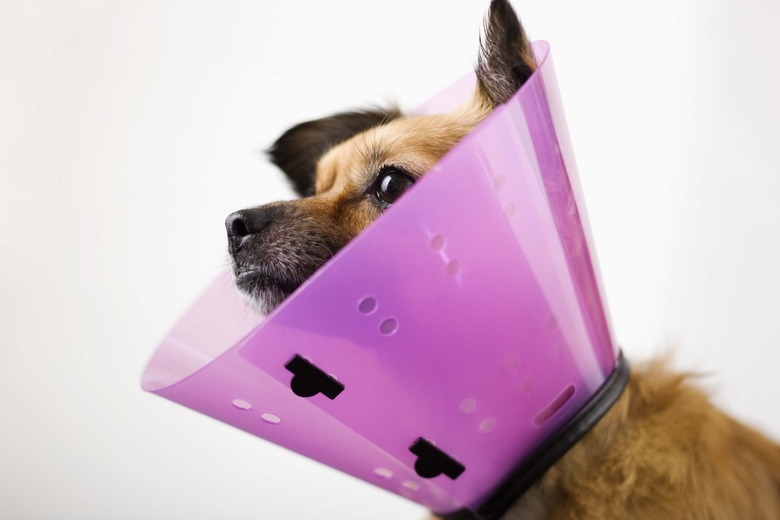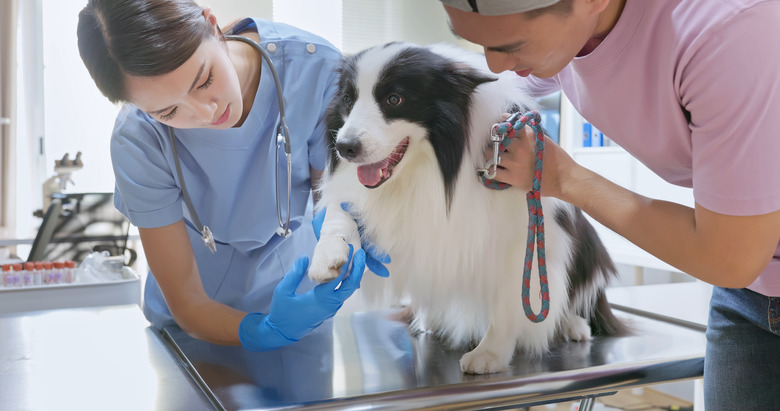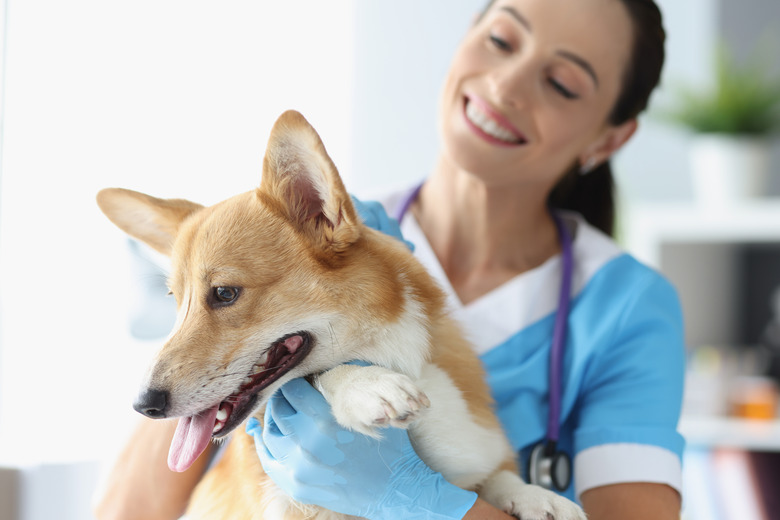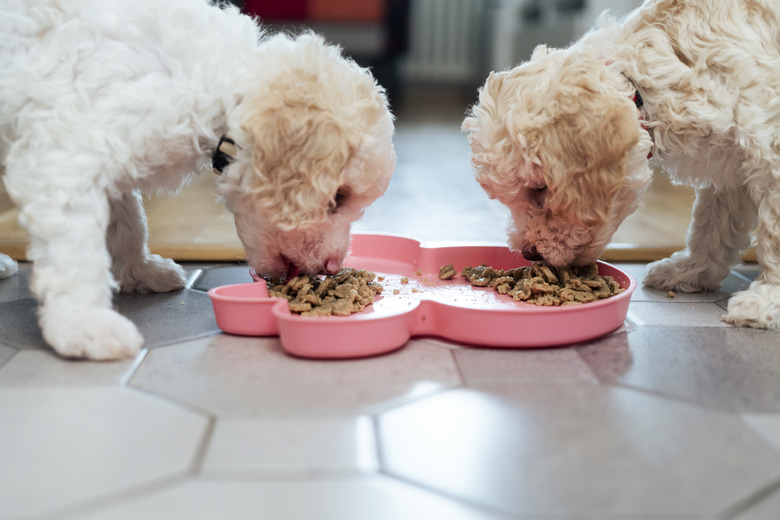My Dog Is Licking Her Foot & Limping
There are a few health issues which may cause dogs to start limping or favoring a paw. Unfortunately, they can't tell us if they stepped on something sharp, got stung by an insect, have a foreign object like a thorn or a piece of glass in their paw, or have an infection in their paw. Instead, we must learn to look for the signs of trouble and identify the underlying cause.
Common causes for dog limping and paw licking
If you recently noticed that your dog has started limping, you may be worried about the reason. There are a variety of reasons a dog may be licking their paws and limping, some of which can include injury, itchiness, and pain.
- Chronic condition. Gradual or intermittent limping could be due to an
age-related or chronic condition such as arthritis. - Tumors.Tumors could also cause limping that may appear to gradually worsen as the tumor grows.
- Injury. Sudden, limping could be due to an injury or an exacerbation of an underlying condition. Some causes may include a bone or muscle injury, trauma, an existing wound, or a foreign body.
- Allergies. Allergies can cause irritation and itchiness of the skin on the paws and between the toes, leading a dog to lick the areas excessively and possibly limp due to the inflammation and discomfort
Limping should always be assessed by your veterinarian, but there are some cases where you don't want to wait for normal office hours to have your dog looked at. If you notice a sudden change in behavior, pain, or signs of a serious injury, you will need to get your dog to a veterinarian immediately.
Signs of a serious injury to a dog's paw include:
- unwillingness to put any weight on the limb
- yelps or other indications of
pain - swelling
- obvious broken bones or fractures
- difficulty breathing and/or rapid respiration
- a change in the way they are walking.
- A dangling limb could be a sign that
something may be broken or dislocated. - A painful, swollen toe may indicate a toe fracture.
Your dog’s limping may be from a paw injury
Dog paw pads have thick tissue on the bottom, but that tissue can still be injured. Stepping on sharp objects, such as glass, thorns, foxtails, or nails, can either cut your dog's paws or become stuck in them. Their toenails can break off, their dewclaws could become stuck on something and tear, or your dog may have suffered a bite from an insect or another animal, causing swelling and infection.
If any of these things happen, you may see your dog frequently licking at a specific area on one paw. Paw licking and chewing is a common behavior in dogs, and they may intermittently lick and chew at their paws as part of their regular grooming routine. However, if you notice that your dog is licking excessively or constantly, that's a sign that something is wrong. If this behavior starts suddenly and continues to persist over time, it should be looked at by a veterinarian. A dog who is licking their paws a lot — and in particular, a dog licking their paws and limping — is a sign that they are in pain or are uncomfortable.
Your dog may be limping due to joint or soft-tissue injuries
Paw pad injuries aren't the only injuries that can lead to paw licking or limping. A dog who runs too fast or jumps too far could injure their ligaments, tendons, or the joints themselves. This can lead to pain, which may cause your dog to lick their paws or limp. Over time, arthritis can develop in an injury that may not seem as serious at first.
A dog can tear their cranial cruciate ligament (like the anterior cruciate ligament, ACL, in humans) or the ligaments that keep their kneecaps in place. These types of injuries are very common. With this type of joint or soft-tissue injury, your dog will limp and may lick to soothe themself.
Limping may be a sign that your dog’s hair is growing too long
Another thing to visually inspect is hair that can grow too long between the toes of certain dog breeds. This is more common in dogs with longer fur. If this long fur becomes matted between the toes, it can cause skin irritation and infection. It may also cause discomfort when walking. Long fur can also contribute to slipping, risking ligament and tendon injuries.
If a dog's nails are allowed to grow too long, this can also contribute to limping and pain. Proper care of your dog's hair and nails can help to prevent any limping or irritation.
Dogs with shorter hair may also experience a condition known as interdigital furuncles between their toes. This happens when the dog's shorter hair is forced backward into the hair follicles, causing irritation. When the hair follicle becomes infected, it can turn into a small, fluid-filled lump due to the pus buildup. This can be uncomfortable and painful for your dog, causing them to limp. This condition is more common in Shar Peis, Labrador retrievers, and English bulldogs, but can be seen in any dog with short hairs between the toes. Allergies and mite infections can also cause this condition.
Your dog may experience paw injuries from hot or cold weather
You should take special care if you are taking your dog outdoors during the cold of winter or in the hot summer sun. Taking your dog for a walk in the bitter cold of winter can leave their paw pads chapped or frostbitten. Salt or chemical ice melters that are used on roads or sidewalks can be especially irritating. If these products get on your dog's paw pads, your dog may ingest them when they lick, causing toxicity.
Never walk your dog in dangerously cold weather or leave them outside in cold weather. If you do walk them in cold or icy conditions, make sure their feet are fully protected and they aren't outside for too long.
In summer, your dog's paw pads can become blistered and burned by walking on hot sidewalks, pavement, or other surfaces. Never walk your dog outside on hot pavement, as this can cause serious and painful injury. If your dog's paw pads become burned, they could exhibit blisters, loose flaps of skin, or red patches. Burns on paw pads require immediate veterinary attention.
A bacterial infection or yeast could cause your dog to limp
Bacterial or yeast infections between the paw pads and toes can cause a dog to limp and lick excessively at the area. You may notice a strong odor coming from your dog's paws or red, swollen, painful areas. These infections occur when there's an underlying condition causing an abnormal skin environment, and will likely continue to occur unless the inciting cause is identified and treated, as well as the infection. Allergies are one of the most common causes of secondary bacterial or yeast infections, but unhealed trauma, tumors, and foreign bodies like foxtails (grass awns) can also be an underlying cause. Your veterinarian can determine the best treatment for an infection in your dog's foot, which may include antibacterial or antifungal medications, topical medications or foot soaks, and appropriate treatment for the underlying condition.
If your dog is recovering from these problems, try to keep their paws dry until it clears up. You might hear advice to soak your dog's feet or wash them in warm water, but water does not treat bacterial or yeast infections. When examining your dog's paws if you see your dog licking their paws or limping, check for an odor. This could indicate an infection that you might not be able to see. If you notice that your dog's paws have an odor or any other signs of infection, make a vet visit for diagnosis and treatment.
The bottom line
There are many possible causes for excessive paw licking or limping in dogs. These conditions should not be addressed at home, but assessed by a veterinarian to determine the cause and a treatment plan. This includes swelling, difficult breathing, changes in the way they walk, or the presence of obvious broken bones or fractures. If your dog keeps licking their paw or is showing signs of a serious injury or pain, take them to your DVM for immediate care. To prevent paw injuries, be extra careful when walking your dog in very hot or very cold temperatures, and never walk your dog on hot pavement. For longer-haired dogs, keep the fur trimmed around their paws so it doesn't form matts or cause them to slip. For all dogs, keep nails trimmed and inspect your dog's paws regularly for any signs of redness, swelling, pain, trauma, or injury.



